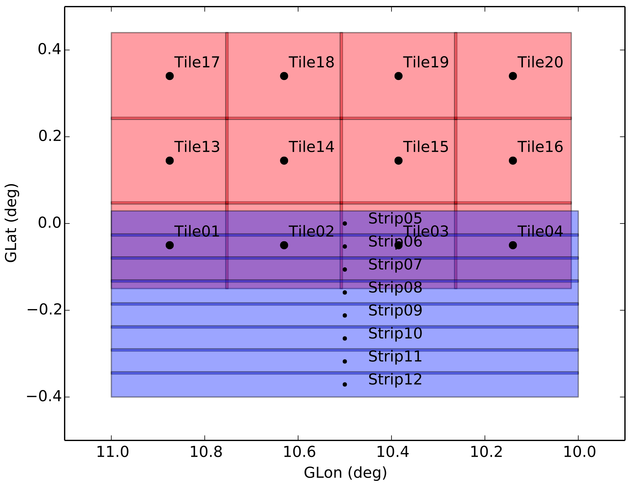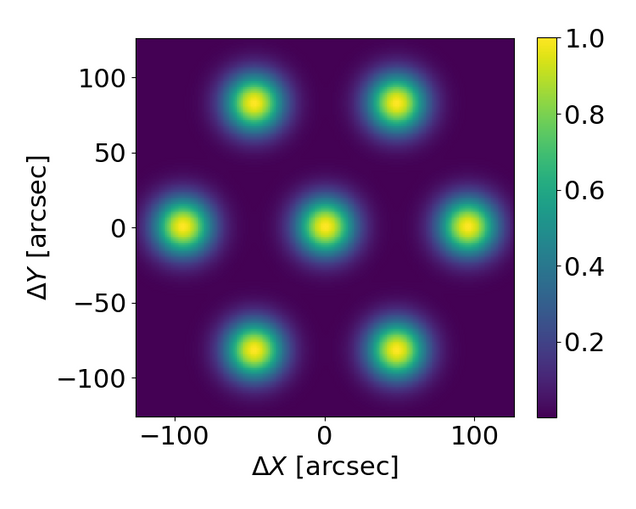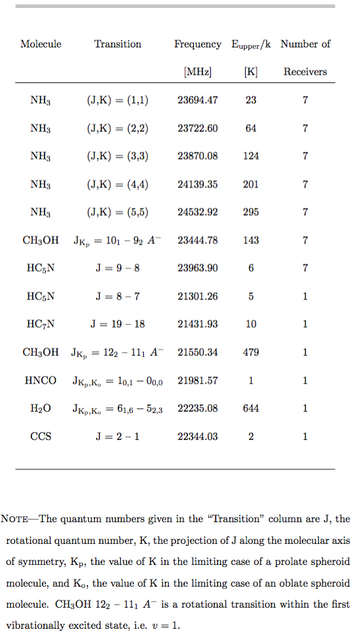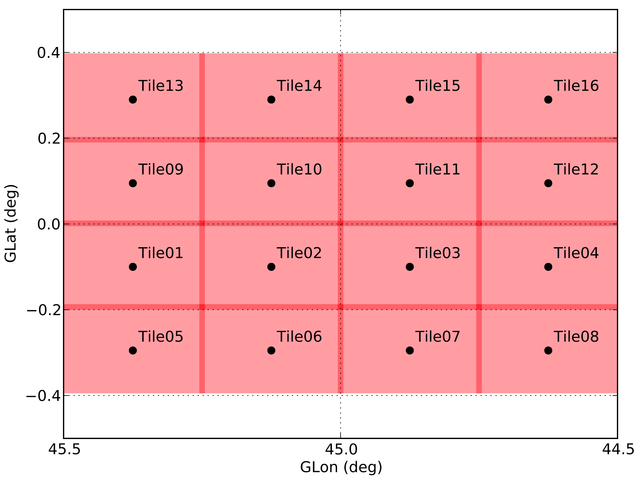Observations
We perform RAMPS observations using the GBT, which is a large (100 meter) single dish radio telescope. The K-band Focal Plane Array (KFPA), a seven element receiver array, and the VErsatile GBT Astronomical Spectrometer (VEGAS), a spectrometer equipped for use with receiver arrays, provide RAMPS with the ability to quickly map multiple spectral lines with good spatial and spectral resolution. As shown below, the receivers are arranged in a hexagonal pattern with a beam-to-beam separation of 95″ and each KFPA receiver has a full width at half maximum beam size of 32″ at the NH3(1,1) rest frequency. The spectra have a native spectral resolution of 1.4 kHz, which we smooth to 15.4 kHz (0.2 km/s) for the NH3 spectra and 9.8 kHz (0.14 km/s) for the H2O spectra.
RAMPS Line List
During our initial pilot observations we tested trade-offs between observing in tiles and observing in strips. We found that observing in tiles provided better data quality, thus we continued the pilot survey with tile observations.

Most of the current RAMPS dataset was observed in 1˚ x 0.8˚ “fields” made up of sixteen 0.26˚ x 0.208˚ tiles as shown below.






